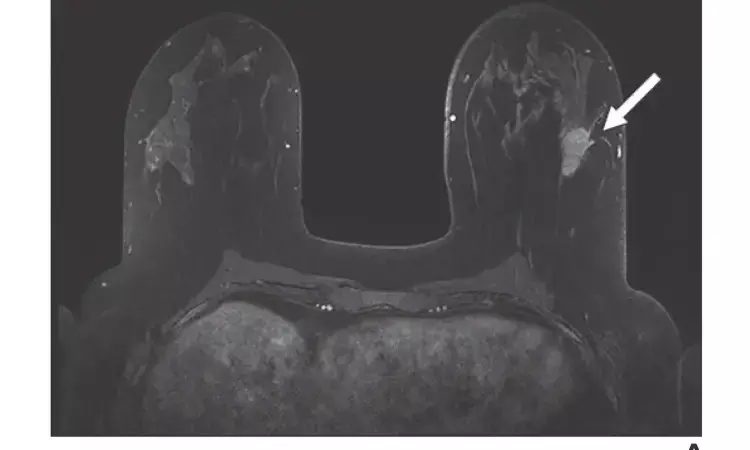- Home
- Medical news & Guidelines
- Anesthesiology
- Cardiology and CTVS
- Critical Care
- Dentistry
- Dermatology
- Diabetes and Endocrinology
- ENT
- Gastroenterology
- Medicine
- Nephrology
- Neurology
- Obstretics-Gynaecology
- Oncology
- Ophthalmology
- Orthopaedics
- Pediatrics-Neonatology
- Psychiatry
- Pulmonology
- Radiology
- Surgery
- Urology
- Laboratory Medicine
- Diet
- Nursing
- Paramedical
- Physiotherapy
- Health news
- Fact Check
- Bone Health Fact Check
- Brain Health Fact Check
- Cancer Related Fact Check
- Child Care Fact Check
- Dental and oral health fact check
- Diabetes and metabolic health fact check
- Diet and Nutrition Fact Check
- Eye and ENT Care Fact Check
- Fitness fact check
- Gut health fact check
- Heart health fact check
- Kidney health fact check
- Medical education fact check
- Men's health fact check
- Respiratory fact check
- Skin and hair care fact check
- Vaccine and Immunization fact check
- Women's health fact check
- AYUSH
- State News
- Andaman and Nicobar Islands
- Andhra Pradesh
- Arunachal Pradesh
- Assam
- Bihar
- Chandigarh
- Chattisgarh
- Dadra and Nagar Haveli
- Daman and Diu
- Delhi
- Goa
- Gujarat
- Haryana
- Himachal Pradesh
- Jammu & Kashmir
- Jharkhand
- Karnataka
- Kerala
- Ladakh
- Lakshadweep
- Madhya Pradesh
- Maharashtra
- Manipur
- Meghalaya
- Mizoram
- Nagaland
- Odisha
- Puducherry
- Punjab
- Rajasthan
- Sikkim
- Tamil Nadu
- Telangana
- Tripura
- Uttar Pradesh
- Uttrakhand
- West Bengal
- Medical Education
- Industry
Contrast mammography or contrast MRI, which is best for breast cancer diagnosis? Study sheds light

Austria: Contrast-enhanced MRI (CE-MRI) and contrast-enhanced mammography (CEM) showed comparable performance for identifying breast cancer, however, CE-MRI demonstrated superior sensitivity, according to a recent study in Radiology.
In breast imaging, contrast-enhanced mammography is a more accessible alternative to contrast-enhanced MRI, but there is a lack of a summary comparison of published studies. To fill this knowledge gap, Pascal A. T. Baltzer, the Medical University of Vienna and General Hospital, Vienna, Austria, and colleagues set out to make a direct comparison of the performance of CEM and CE-MRI regarding sensitivity, specificity, and negative predictive value in detecting breast cancer.
Characteristics of studies investigating the comparative diagnostic performance of CEM and CE-MRI in detecting breast cancer were extracted by two readers. Studies published until April 2021 were eligible. Bivariate random effects models were used to calculate specificity, sensitivity, negative predictive value, and positive and negative likelihood ratios.
A Fagan nomogram was utilized to identify the maximum pretest probability at which posttest probabilities of a negative CEM or CE-MRI examination were in line with the 2% malignancy rate benchmark for downgrading a Breast Imaging Reporting and Data System (BI-RADS) category 4 to a BI-RADS category 3 results.
The researchers reported the following findings:
· Seven studies investigating 1137 lesions (654 malignant, 483 benign) with an average cancer prevalence of 65.3% (range: 47.3%–82.2%) were included. No publication bias was found (P = .57).
· While the positive likelihood ratio was equal at a value of 3.1 for CE-MRI and 3.6 for CEM, the negative likelihood ratio of CE-MRI (0.04) was lower than that with CEM (0.12).
· CE-MRI had higher sensitivity for breast cancer than CEM (97% vs 91%, respectively) but lower specificity (69% vs 74%).
· A Fagan nomogram demonstrated that the maximum pretest probability at which both tests could rule out breast cancer was 33% for CE-MRI and 14% for CEM.
· Iodine concentration was positively associated with CEM sensitivity and negatively associated with its specificity.
The authors conclude, "contrast-enhanced MRI had superior sensitivity and negative likelihood ratios with higher pretest probabilities to rule out malignancy versus contrast-enhanced mammography."
Reference:
The study titled, "Contrast-enhanced Mammography versus Contrast-enhanced Breast MRI: A Systematic Review and Meta-Analysis," was published in the journal Radiology.
Dr Kamal Kant Kohli-MBBS, DTCD- a chest specialist with more than 30 years of practice and a flair for writing clinical articles, Dr Kamal Kant Kohli joined Medical Dialogues as a Chief Editor of Medical News. Besides writing articles, as an editor, he proofreads and verifies all the medical content published on Medical Dialogues including those coming from journals, studies,medical conferences,guidelines etc. Email: drkohli@medicaldialogues.in. Contact no. 011-43720751


